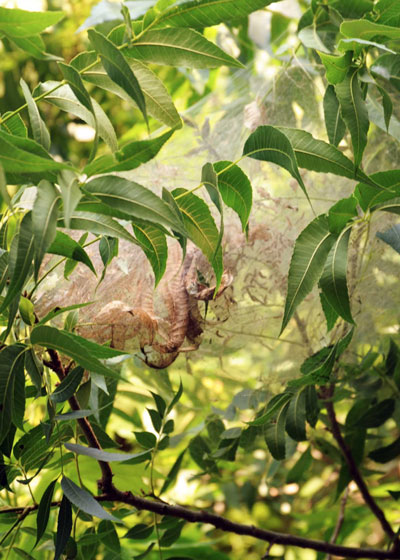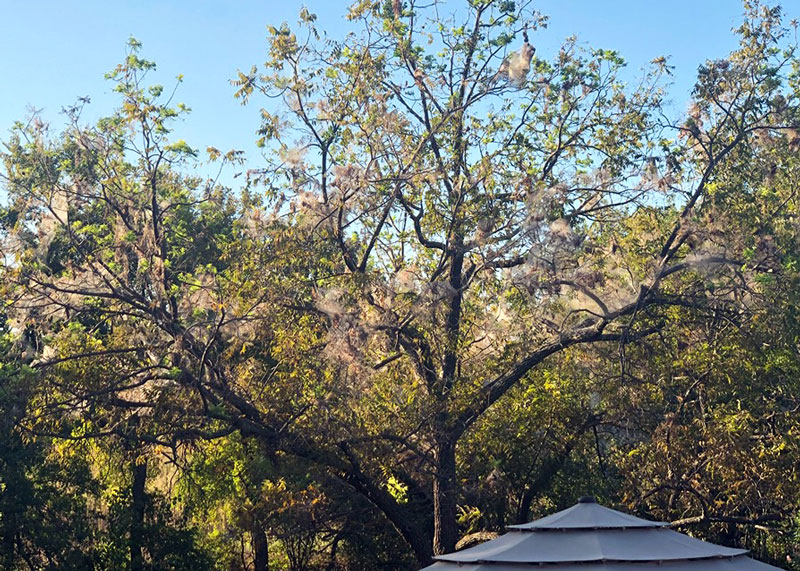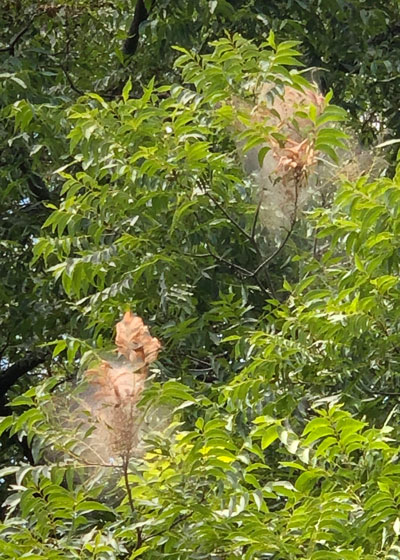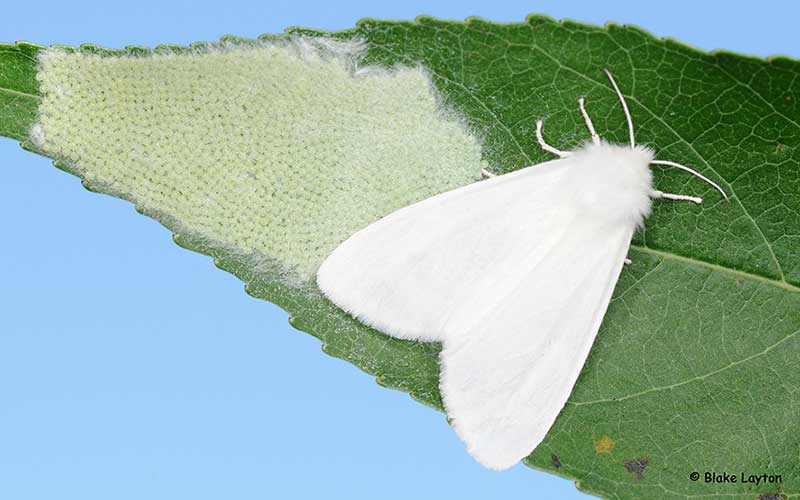It must be fall, because…

Fall webworms have arrived. Usually there are at least two generations per year, one in the spring and one about now. But, for whatever the reason, the spring “crop” didn’t materialize – at least not so much where I garden northeast of the Metroplex.
But lest you worry, the webworms are alive and well, and they’re feeding quite handsomely now on pecans, walnuts, persimmons and a whole host of other Texas trees.

How much damage do webworms do?
Aesthetically, a lot! These things are ugly. It’s like having giant cobwebs hanging from all your furniture and light fixtures. Cobwebs that poop all over your floor.
But their physical damage to the trees is limited. First of all, most of their feeding is done in the fall. Trees have finished most of their growth for the year by now, so the caterpillars aren’t going to hurt the supply line by much.
Even if the first generation hits in late spring it’s usually going to impact just a few branches here or there, and the tree usually will regrow new shoots very quickly.

What can we do to control them?
I use a long-handled pole pruner to trim out as many of the webs as I can reach. But even more importantly, I do so when they’re just getting started – when the webs are the size of a grapefruit. If you wait until they’re as big as a pig you’ll end up pruning out more of a branch than you’ll really want to remove.
Before you hoist up the pole pruner, be sure it’s made of plastic, wood (can be heavy) or fiberglass. Metal poles are sturdy, but they conduct electricity. For that matter, no pole, even plastic, wood or fiberglass should be used anywhere near power lines. I collect the fallen webs and put them into plastic trash bags, then send them out with the trash.
You might also be able to attach a sturdy coat hanger to the end of a piece of PVC pipe so that you can pull the webs out of your trees. Sometimes just tearing them open exposes them to sun, wind and birds.

Spraying isn’t generally an efficient means of controlling them. It’s difficult to get a spray specifically to the webs, and then it’s hard to get the spray into the webs themselves. Spreader/sticker surfactants will help with that task, but since the damage they do is so minimal, most of us just prefer to use one of the other remedies.
For the high-hanging webs that I can’t easily reach, I just leave them in place. They finish their feeding and the webs stay in place. As fall brings the leaves down, the old webs will come down with them.
Want to learn more about fall webworms? Every state university’s Entomology Department has a very thorough fact sheet covering them. Simple Google “university entomology fall webworms.”
